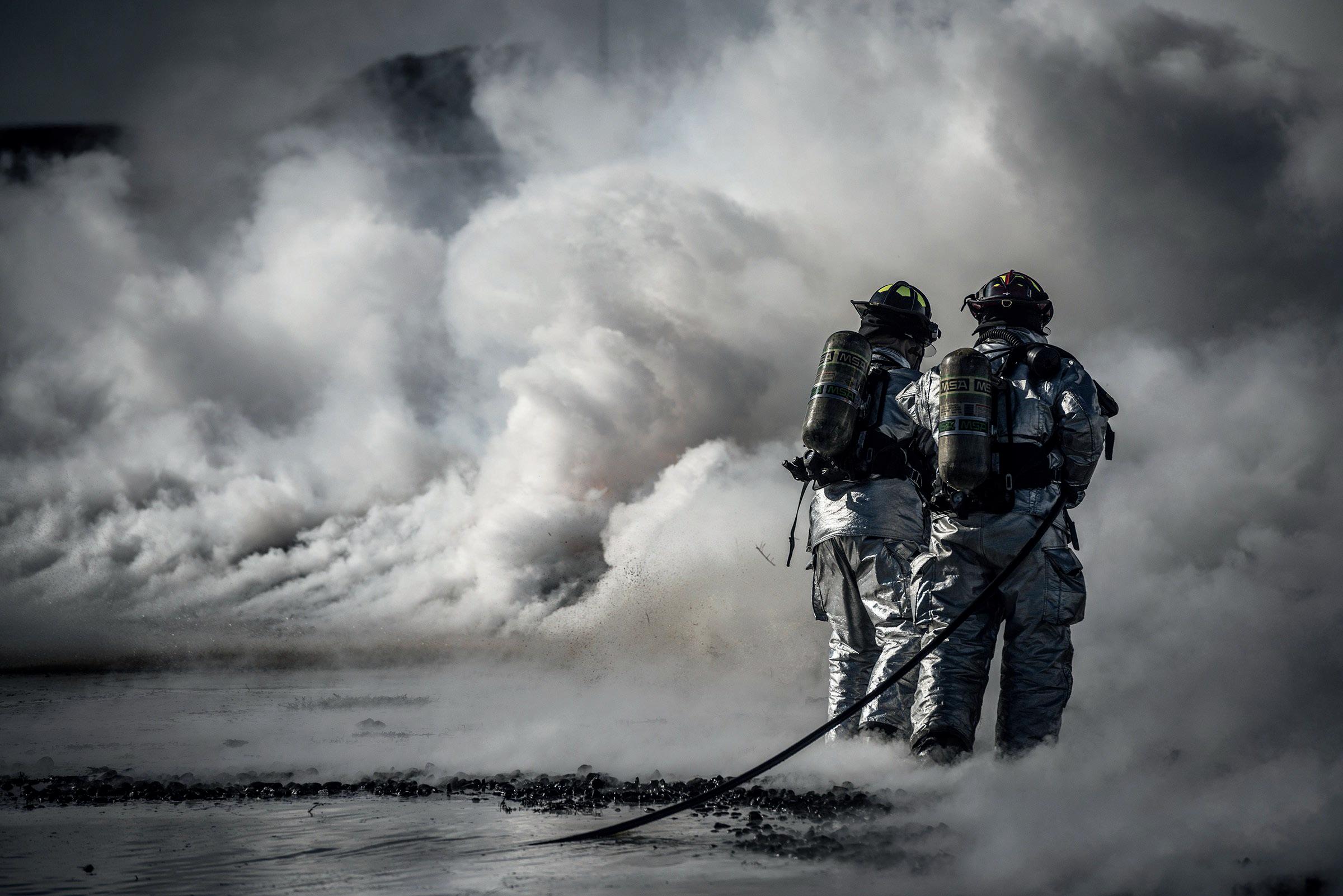
8 minute read
Outsourcing: Emergency Response As A Service
by Catalyst
Safety is a crucial precondition that must be met to legitimate a company’s license to operate. An adequate emergency response organization that is tailored to the risk profile and scenario analysis of an industrial area is an essential aspect in this matter. For almost all industrial areas emergency response is a support process that differs markedly from the core activities. For this reason one can choose to outsource the fulfilment of this support process to a specialized service provider. This article gives an insight in advantages, possibilities and points of attention when outsourcing emergency response services. THE MAIN ADVANTAGES OF OUTSOURCING The main advantage of outsourcing emergency response to a specialised service provider is bringing a specialised company in for the day to day management of the emergency response organization. In almost every case emergency response differs from the companies’ main processes. Often this means that work processes and procedures are not designed for optimal daily management of an emergency response organization. However, proper daily management is crucial in a specialized work field like emergency response. To secure the quality, effectiveness and work safety of this type of organization a high level of knowledge and attention to detail is necessary to i.e. ensure reliable equipment and sufficient training and drills. Dedicated management by an experienced organization helps to secure these essential criteria.
Note that even when outsourcing emergency response services and its daily management, adequate contract management is important. The client companies must be very clear about expectations and the desired level of quality. Including clear key performance indicators (KPI’s) and delivery criteria in the contract allows the stakeholders to periodically evaluate and test the emergency response performance and guarantee the quality of service.
Advertisement
THE EMERGENCY RESPONSE SERVICE PROVIDERS: A WORLDWIDE MARKET Probably, most people don’t have a few emergency response service providers in their cell phone or know by heart where to find them. When digging deeper a preliminary market analysis shows that at least 65 service providers can be identified in a worldwide market. There are big differences between these providers regarding i.e. the exact type of services they provide and the markets/areas they serve. The first category we found includes service providers that provide permanent 24/7 on-site services with regard to incident prevention and preparation, such as a company fire brigade. They are located within the specific (industrial) site/area, are able to respond within minutes and are tailored to the specific site. The organization may or may not be built (originally) to specifically service only one site, area or company. Another type of service provider provides standby services as required. That means services that are on standby during specific activities such as facility turn-arounds, just in case they are needed. Such services are typically project-based and thus for limited time periods (short, medium or long term), and apply to emergency and/or non-emergency incidents. Yet another type of service providers provides call-off services: services that are dispatched only when they are required during a largescale incident. They possibly need to come from far away, as they are dispatched from headquarters or operations centres and usually respond within 24 or 48 hours. To conclude there is a large group of companies in related fields, such as security, technical service providers, medical and training and consultancy companies.
SETTING REQUIREMENTS TOGETHER Judging a service provider’s expected performance can only be done by setting clear requirements and criteria to be met as well as clearly specifying how these will be evaluated. This starts not with a contract but when procuring the required emergency services, regardless whether this is done through a bidding or tender process. Starting point is the Request for Proposal (RFP): a document that invites potential suppliers to submit

a business proposal for the provision of a certain commodity, service or asset. The RFP presents preliminary requirements for the commodity or service, and may dictate to varying degrees the exact structure and format of the supplier’s response. When drafting an RFP it is key to identify requirements and criteria that are key for a good functioning emergency response system that meets your area’s needs. A starting point may be to analyse the sources that may drive potential requirements for emergency response, such as:
1. Legal and licensing requirements; 2. (Inter)national standards; 3. Insurance conditions; 4. Contractual obligations; 5. Management considerations.
This is an important step, as proposal selection is the joint domain of the procurement office and the emergency response expert. For example the personnel capacity and training as well as the equipment proposed must be suitable to address the scenario’s relevant for your site and the tasks specified; interconnectivity between any equipment proposed and (fixed) systems already present must be guaranteed etc. Consider also the need to adhere to certain standards as quality insurance and/or to comply with insurance policies or governmental directives.
When multiple companies or sites collectively outsource services it is imperative to check whether requirements differ throughout the stakeholders involved.
SELECTING THE BEST FIT TOGETHER The goal of any selection process is to identify the best fitting proposal. A first step in an evaluation process should be to weed out proposals that are not suitable, and shortlist the proposals with the most potential. To this end one can define minimum requirements. There are many technical requirements and quality criteria that are to be met before an offer can be considered suitable. For example that a proposal must score at least 70% on the technical aspect to be considered for the financial and final scoring, or that a service provider must have a track record over a certain number of years.

When a service provider for a collective emergency response organization is selected, the evaluation process must be done such that the stakeholder collective involved will support the final choice. Transparency and involvement are often key elements in such a process. Sharp, predefined evaluation criteria help achieve a transparent and uniform evaluation process. One needs a clear predefined framework stating how many points can be awarded per element of a proposal as well as clear instructions for the evaluators on how to award scores: when does one get i.e. 100, 80, 50, 20 or 0%? Involvement of all parties can be achieved by including a representative per company in the evaluation committee. Support from an internal or external expert, preferably one involved with drafting the Request for Proposal, may contribute to a better understanding of the technical requirements in the RFP and the proposals submitted.
THE STRENGTH OF COLLABORATION: MUTUAL AID, AND OUTSOURCING There are numerous examples of areas that have an agreement to facilitate the exchange of emergency response equipment or emergency responders between Mutual Aid partners. Similarly there are several examples in which a separate legal entity is established to fulfil the emergency response for the associate stakeholders in the area. Another known set-up is that expensive and
rarely used emergency response resources are funded, maintained and managed collectively. This results in an opportunity to increase effectiveness and quality of service, by effectively and cost efficiently providing preparedness and coverage for large scenarios that have a very low frequency of appearance but a very large impact. Mutual Aid comes in different forms and there is no dominant blueprint.
Outsourced emergency response activities can be the tangible output of a mutual aid initiative in which multiple companies collectively organize emergency response services. An outsourced (collective) emergency response organization can also collaborate with other partners in a mutual aid agreement to cover large scale or specific scenario’s that require extensive and/or specialized resources. It is an effective and cost efficient way to provide the needed support for any large scale scenario without having to provide in a very extensive and expensive emergency response organization yourself. As is done in a middle eastern port one could choose to provide ‘only’ a concise basic capacity on site, tailored to the frequently occurring, most credible scenario’s. Knowing that a mutual aid system is in place if any additional support is needed, this results in a cost-efficient and very effective emergency response system.
CONCLUSION Emergency response is a crucial and very specialized support process for industrial areas. Companies are not necessarily set-up and equipped to provide adequate daily management to a joint emergency response organisation. Outsourcing emergency response services to a specialized service provider may provide a solution. Before approaching and selecting a service provider it is important to know the market and how it fits to your needs and requirements. Service providers differ in the services they offer, the countries they operate in, their track record etc. The process of defining an agreed Request for Proposal or programme of requirements is an essential step to match the market with companies’ needs. Prioritization of the requirements is necessary to avoid making a false step in the process.
Above: Gaby Van Melick



Above: Philip Stohr
ABOUT THE AUTHORS Gaby van Melick and Philip Stohr are consultants in the field of emergency and crisis management at Kappetijn Safety Specialists, specialising in assisting public and private organisations prepare for large incidents and crises. In its capacity as a consultancy firm, Kappetijn closely follows the developments regarding industrial fire services and works with companies, authorities and knowledge institutions internationally.
For more information visit: www.kappetijn.eu












